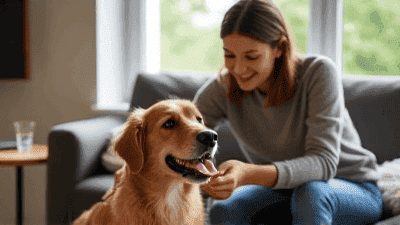
Adopting a pet from a shelter is a rewarding experience that gives an animal a second chance at life. However, transitioning from a shelter environment to a new home can be overwhelming for both the pet and the adopter. Whether you’re bringing home a dog, cat, or small animal, the adjustment period requires patience, understanding, and a well-thought-out plan.
Many shelter pets have experienced trauma, neglect, or abandonment. The shelter environment, while safe, can be stressful due to noise, limited space, and unfamiliar animals and people. As a result, your new pet may feel anxious or scared when transitioning to a new home.
Every pet is different, and the time it takes for them to adjust to their new home can vary. Some pets may feel comfortable within days, while others may take weeks or even months. Patience and consistency are key during this process.
Your role is to provide a safe, nurturing environment that helps your pet build trust and confidence. By understanding their needs and respecting their pace, you can make the transition smoother and more positive.

Set up a designated area where your pet can retreat and feel secure. This could be a quiet room with a bed, toys, and food and water bowls. For cats, consider adding a scratching post and hiding spots.
Ensure your home is safe by removing any hazardous items, such as electrical cords, toxic plants, and small objects that could be swallowed. Secure cabinets and trash cans to prevent curious pets from getting into trouble.
Stock up on the necessary supplies before bringing your pet home. These may include:
Transitioning to a new diet can upset your pet’s stomach. Ask the shelter about the food your pet has been eating and gradually introduce any new food over 7-10 days to avoid digestive issues.
When you pick up your pet, stay calm and speak softly. Use a secure carrier or leash to transport them safely. Avoid overwhelming them with too many people or loud noises during the ride home.
Let your pet explore their new environment at their own pace. Start with one room and gradually allow them to explore other areas as they become more comfortable. Supervise them to ensure they don’t get into anything dangerous.
Pets thrive on routine, so establish a consistent schedule for feeding, walks, and playtime. This helps them feel secure and understand what to expect in their new home.
Some pets may hide, act shy, or even display fearful behavior during the first few days. Avoid forcing interactions and give them time to acclimate. Offer treats and gentle encouragement to build trust.

Spend time bonding with your pet through play, grooming, and cuddling. For dogs, short training sessions can help build trust and reinforce positive behaviors. For cats, gentle petting and interactive toys can help them feel more comfortable.
Reward your pet with treats, praise, and affection for good behavior. This helps them associate you with positive experiences and builds confidence.
If your pet seems stressed or overwhelmed, give them space and time to relax. Forcing interactions can increase anxiety and slow the bonding process.
If you have other pets, introduce them gradually to avoid conflicts. Start with short, supervised interactions and separate them if tensions arise. Use positive reinforcement to encourage calm behavior.
Teach children how to interact with your new pet gently and respectfully. Supervise all interactions to ensure the pet feels safe and comfortable.
Limit visitors during the first few weeks to avoid overwhelming your pet. When introducing your pet to new people, ask them to approach calmly and let the pet initiate contact.

Many shelter pets experience anxiety or fear due to past trauma. Signs include trembling, hiding, or excessive barking or meowing. To help your pet feel secure:
Some pets may exhibit behavioral issues, such as chewing, scratching, or litter box avoidance. Address these issues calmly and consistently:
Shelter pets may have underlying health issues that require attention. Schedule a veterinary checkup soon after adoption to ensure your pet is healthy and up-to-date on vaccinations.
Schedule annual checkups and stay up-to-date on vaccinations, flea and tick prevention, and dental care. Regular care helps prevent health issues and ensures your pet’s well-being.
Provide plenty of opportunities for exercise and mental stimulation. For dogs, daily walks and interactive toys are essential. For cats, offer climbing structures, puzzle feeders, and playtime with toys.
Training is an ongoing process that strengthens your bond with your pet and reinforces good behavior. Even after basic training, continue teaching new commands and tricks to keep your pet engaged.
Expose your pet to new experiences, people, and animals in a positive and controlled way. This helps them become well-adjusted and confident.
Adopting a pet from a shelter is a chance to give them a second chance at life. In return, they’ll offer you unconditional love, loyalty, and companionship.
By adopting, you’re not only saving one life but also freeing up space in the shelter for another animal in need.
The bond you build with your adopted pet is truly special. Over time, your pet will learn to trust and love you, creating a lifelong connection.
Transitioning from a shelter to a new home is a significant change for any pet. By preparing your home, providing a safe and nurturing environment, and building a strong bond, you can help your new pet settle in and thrive. Remember, patience and understanding are key during the adjustment period. With time, love, and care, your adopted pet will become a cherished member of your family, bringing joy and companionship for years to come.